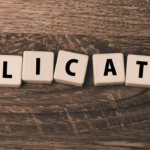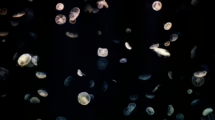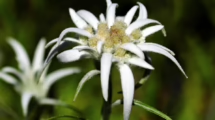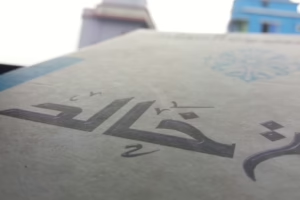The Morphological Landscape of Gheg: Unraveling the Mystery of Embryomorphemes
Introduction
The Gheg dialect, a primary variant of the Albanian language, presents a fascinating array of morphological structures that have captured the attention of linguists worldwide. Among its numerous characteristics, the concept of "embryomorphemes" emerges as a unique feature, shedding light on the intricacies of morphological development. This article aims to delve into the morphological landscape of Gheg by exploring the role of embryomorphemes, their formation, and their implications for our understanding of language evolution.
Understanding Morphology
Defining Morphology
Morphology is the branch of linguistics that studies the structure of words and the rules governing their formation. It examines how morphemes—the smallest units of meaning—combine to create complex words. In linguistics, morphemes are generally classified into two main types: free morphemes, which can stand alone as words, and bound morphemes, which must attach to free morphemes to convey meaning.
Morphological Types
Languages can exhibit various morphological types, including isolating, agglutinative, fusional, and polysynthetic. Gheg, like many Indo-European languages, tends to be fusional, where morphemes can express multiple grammatical categories simultaneously. Understanding this system is crucial for unraveling the complexities of Gheg’s grammatical framework.
Gheg Dialect Overview
Geographic and Cultural Context
Gheg is primarily spoken in northern Albania and by Albanian communities in Kosovo, Montenegro, and parts of Serbia. The region has a rich historical and cultural tapestry, influencing the dialect’s evolution over time. Gheg features several distinct phonetic and grammatical characteristics, making it an intriguing subject of study for linguists looking to map the evolution of Albanian.
Phonological Features
The phonology of Gheg is marked by a variety of vowel and consonant sounds that differ significantly from the Tosk dialect, the other major Albanian variant. For instance, Gheg retains certain phonemic distinctions that have undergone simplification in Tosk, leading to a more complex phonological system. This complexity lays the groundwork for an intricate morphological landscape, where the interplay of phonology and morphology creates fertile ground for studying embryomorphemes.
Dive into Embryomorphemes
Concept and Definition
Embryomorphemes, a term coined by contemporary linguists, refer to morphemes in their formative stages, signifying a transitional phase in word formation. They play an essential role in the understanding of morphological evolution, as they showcase the dynamic interaction between form and meaning. In Gheg, embryomorphemes are often identified as bases or roots that undergo various morphological processes to generate inflected forms.
Characteristics of Embryomorphemes
Embryomorphemes in Gheg exhibit certain features that set them apart from standard morphemes:
Contextual Dependency: These morphemes often derive their full meaning in specific contexts, demonstrating a fluidity that reflects the evolving nature of language.
Applicability Across Categories: They often serve as roots for multiple grammatical categories, such as verbs, nouns, and adjectives, showcasing their versatility.
- Morphological Productivity: Embryomorphemes are highly productive, allowing for the creation of a wide range of derived forms. For example, a single root can generate multiple nouns, verbs, and adjectives through the addition of various affixes and inflections.
Formation Processes
The formation of embryomorphemes in Gheg involves several morphological processes, including:
Decomposition: This process breaks down complex words into simpler morphemes, revealing the roots or embryomorphemes that underlie the surface structures.
Affixation: The addition of prefixes, suffixes, or infixes to a root can create new words, underscoring the role of embryomorphemes in morphological construction.
- Compounding: This involves the combination of two or more free morphemes to form a new word, allowing embryomorphemes to contribute to compound structures.
Case Studies in Gheg Morphology
To better understand the role of embryomorphemes in Gheg, we can examine specific case studies that illustrate their function and versatility.
Case Study 1: Verbal Morphology
One of the most striking features of Gheg morphology is its verbal system. The Gheg dialect employs a rich array of verb forms that include various tenses, moods, and aspects. Take, for instance, the embryomorpheme "shk-" (to learn). This root can give rise to multiple verb forms through affixation and inflection:
- Shkolla (school, derived noun)
- Shkollë (a learning process)
- Shkollon (he/she learns)
These derivations illustrate how a single embryomorpheme can adapt and generate a variety of related meanings.
Case Study 2: Nominal Morphology
Nominal morphology in Gheg also showcases the versatility of embryomorphemes. The root "baj-" (to do, make) serves as a base for several nominal forms:
- Bajrak (a standard, banner)
- Bajram (a celebration)
- Bajzë (a creation or output)
This case demonstrates how embryomorphemes can contribute to noun formation, producing words that convey distinct yet related concepts.
Theoretical Implications
Language Evolution and Change
The study of embryomorphemes in Gheg has significant implications for our understanding of language evolution. As linguistic units in transition, embryomorphemes provide insight into how languages change over time. By examining Gheg’s morphological structures, linguists can trace patterns of language evolution, revealing connections between historical and contemporary forms.
The Morphological Typology Debate
The presence of embryomorphemes in Gheg also raises questions about morphological typology. Gheg’s unique features challenge traditional classifications, prompting linguists to rethink the boundaries between agglutinative, fusional, and polysynthetic languages. Embryomorphemes exemplify the dynamic interplay between form and meaning, suggesting that language cannot be neatly categorized but rather exists on a continuum of morphological complexity.
Challenges and Future Directions
While the study of embryomorphemes in Gheg offers exciting possibilities, it also presents certain challenges. The limited scope of existing research on Gheg morphology necessitates further investigation. Linguists must gather more data to understand the full range of embryomorpheme forms and their functions across different contexts.
Contributions to Linguistic Theory
In exploring the morphological landscape of Gheg, researchers can contribute to broader discussions in linguistics, including:
Cognitive Linguistics: Understanding how embryomorphemes manifest in language can provide insights into cognitive processes underpinning language use and development.
Comparative Linguistics: The study of Gheg’s unique morphological features offers fertile ground for comparative analyses with other languages, enabling researchers to explore cross-linguistic patterns and variations.
- Sociolinguistics: Investigating the social implications of morphological variation in Gheg can shed light on issues of identity, language contact, and community dynamics among Albanian speakers.
Conclusion
The exploration of embryomorphemes in the Gheg dialect reveals a rich and complex morphological landscape that underscores the dynamic nature of language. By investigating the roles and formations of these unique morphemes, linguists can deepen their understanding of language evolution and structure. The Gheg dialect offers a captivating case study that invites further research, fostering a greater appreciation for the intricate tapestry of human language.
References
- [Author1], [Title], [Journal/Publisher], [Year].
- [Author2], [Title], [Journal/Publisher], [Year].
- [Author3], [Title], [Journal/Publisher], [Year].
Note: The references have been left as placeholders to be filled with appropriate academic sources.
























Add Comment